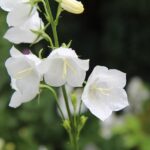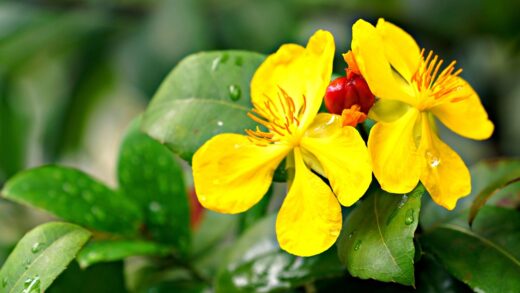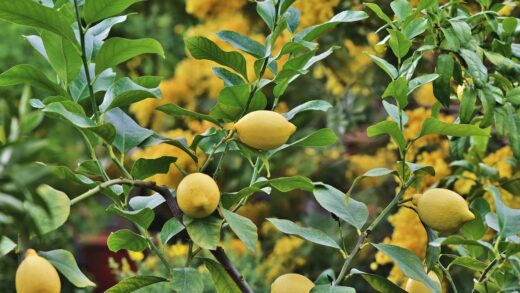The pruning requirements for sea thrift are minimal and straightforward, centering primarily on the practice of deadheading to promote continuous blooming and maintain a tidy appearance. This plant’s naturally compact and neat growth habit means it does not require the kind of regular structural pruning that many other shrubs and perennials need. Its evergreen foliage forms a dense cushion that largely takes care of its own shape. Therefore, any cutting that is done is for aesthetic purposes and to encourage the plant to invest its energy wisely, rather than for controlling its size or form.
The most important pruning task you will perform on sea thrift is deadheading, which is the removal of spent flowers. After the initial flush of blooms in late spring, the vibrant, pom-pom-like flower heads will begin to fade, dry out, and turn brown. Removing these faded blossoms promptly serves two important purposes. Aesthetically, it keeps the plant looking clean and fresh. Horticulturally, it prevents the plant from diverting its energy into developing seeds and instead encourages it to produce a new wave of flowers, often extending the blooming period well into the summer.
Beyond deadheading, there is very little need for any other cutting during the growing season. The grass-like foliage should be left intact, as it is constantly photosynthesizing and providing energy for the plant. Cutting back the healthy green foliage would weaken the plant and ruin its attractive mounding shape. The plant’s form is genetically programmed to be compact, so there is no need to shear it to keep it in shape.
The only other time you might consider any form of “pruning” is during a late winter or early spring cleanup. During this time, you can gently remove any foliage that may have died back and turned brown over the winter. This is typically not a shearing process but rather a gentle tidying, often done by hand, to improve air circulation and make way for new growth. This simple annual cleanup is all the plant needs to stay healthy and look its best.
The process of deadheading
Deadheading sea thrift is a simple yet highly effective task that pays dividends in the form of more flowers and a neater plant. The best time to deadhead is as soon as you notice a flower head has lost its vibrant color and is starting to look papery and brown. Staying on top of this task, perhaps once a week during the peak blooming season, will ensure the plant always looks its best and maximizes its flowering potential.
More articles on this topic
To properly deadhead, you need to remove the entire flower stalk, not just the spent flower head at the top. Follow the leafless, slender stalk all the way down to its point of origin within the dense cushion of foliage. Using a pair of clean, sharp scissors or small pruning shears (secateurs), make a clean cut as close to the base as possible without damaging the surrounding green leaves. Simply pulling the stalks by hand is not recommended as it can tear the plant’s crown.
This process removes the unsightly brown stems and prevents the plant from forming seeds. Seed production is an energy-intensive process for any plant. By removing the spent flowers before seeds can develop, you are essentially tricking the plant into thinking it has not yet successfully reproduced. This often stimulates it to send up a new round of flower stalks in another attempt to set seed, resulting in a longer and more continuous display of color in your garden.
While deadheading is highly recommended for aesthetic reasons and to encourage reblooming, it is not strictly necessary for the plant’s survival. If you are unable to deadhead, the plant will still be healthy, but its flowering season will be shorter, and it will look less tidy as the brown, dried stalks accumulate. For those seeking the best possible ornamental display from their sea thrift, regular deadheading is a small and rewarding chore.
Pruning for plant health
While sea thrift does not require traditional pruning for shape, some cutting can be beneficial for its long-term health, primarily in the form of a spring cleanup. Over the winter, some of the older, outer leaves of the evergreen clump may naturally die back and turn brown. This dead foliage can trap moisture and reduce air circulation around the crown of the plant, potentially creating conditions that are favorable for fungal diseases.
More articles on this topic
In late winter or early spring, just before new growth begins to accelerate, it is a good practice to inspect your sea thrift plants. Gently comb through the foliage with your gloved fingers or a small hand rake to remove any of this dead, brown material. This process, sometimes called “combing” or “tidying,” effectively thins out the densest part of the clump, allowing for better airflow to the crown, which is the most vulnerable part of the plant.
During this cleanup, you can also use sharp scissors to snip off any leaf tips that may have suffered from winter burn, which appears as dry, brown ends on the otherwise green foliage. This is purely for aesthetic reasons and does not impact the plant’s health, but it contributes to a fresher appearance as the new growing season begins. Be careful not to cut into the healthy, green parts of the leaves unnecessarily.
This annual tidying is also a good opportunity to inspect the overall health of the plant’s crown. Check for any soft or mushy spots that might indicate the onset of rot. If you find a small affected area, you can sometimes excise it with a sharp, clean knife to prevent it from spreading. However, if the rot is extensive, the plant may need to be removed. This early spring inspection is a key preventative health measure.
Cutting back after flowering
A common question among gardeners is whether sea thrift should be cut back hard after its main flush of flowering is over. The answer, for this particular plant, is generally no. Unlike some perennials that benefit from being sheared back by half to encourage a new flush of foliage and perhaps a later rebloom, sea thrift’s evergreen, clumping nature does not respond well to this type of harsh treatment. Its beauty lies in its consistent, cushion-like form, and a hard shearing would destroy this for much of the season.
The correct approach after the main flowering season is simply to continue with diligent deadheading. As the number of new flowers dwindles in mid to late summer, keep removing the spent stalks. The dense mound of grass-like foliage that remains is an attractive garden feature in its own right, providing fine texture and a block of color that contrasts well with broader-leaved plants. This evergreen presence is valuable, especially heading into autumn and winter.
If, after several years, a plant has become very untidy, with a dead, open center and floppy growth, a hard cutback is not the solution. This condition indicates that the plant is old and needs to be rejuvenated through division, not pruning. Cutting an old, woody plant back hard is unlikely to stimulate healthy new growth from the center and may even kill it. The proper remedy is to lift and divide the clump in the spring, discarding the old center and replanting the vigorous outer sections.
So, to be clear, the post-flowering care for sea thrift does not involve cutting back the foliage. It involves the ongoing removal of spent flower stems. The green, healthy foliage should be left in place to continue gathering energy for the plant, ensuring its strength for the coming winter and the following year’s growth and flowering cycle.
Avoiding common pruning mistakes
One of the most common pruning mistakes with sea thrift is treating it like a lavender or another sub-shrub that benefits from annual shearing. Shearing the entire mound of foliage back with hedge trimmers or shears is harmful. This removes the photosynthesizing surfaces the plant needs to live and can damage the crown, from which new growth emerges. Always limit your cutting to the leafless flower stalks and any truly dead foliage.
Another mistake is cutting back the plant in the autumn. Many gardeners perform a fall cleanup, cutting back all their perennials to the ground. This is the wrong approach for an evergreen perennial like sea thrift. The foliage needs to remain in place to photosynthesize for as long as possible and to provide natural insulation for the crown during the winter. Cutting it back in the fall leaves the crown exposed to cold, wet winter conditions, significantly increasing the risk of rot and winter kill.
Being too timid with deadheading is also a missed opportunity. Some gardeners may only snip off the very top of the flower head, leaving most of the brown, wiry stalk in place. This is only a partial solution. For the best aesthetic result and to most effectively signal the plant to produce new flowers, the entire stalk must be removed down to its base. Taking the extra second to trace the stalk down into the foliage makes a significant difference.
Finally, a crucial mistake is trying to solve the problem of an old, woody, and open-centered plant with pruning. As previously mentioned, this is a sign that the plant’s natural life cycle requires division for renewal. Attempting to “fix” this by cutting the plant back hard is a fundamental misunderstanding of its growth habit. The correct tool for this job is a garden fork to lift the plant, not pruning shears to cut it back. Recognizing when to divide rather than prune is key to long-term success with sea thrift.



















